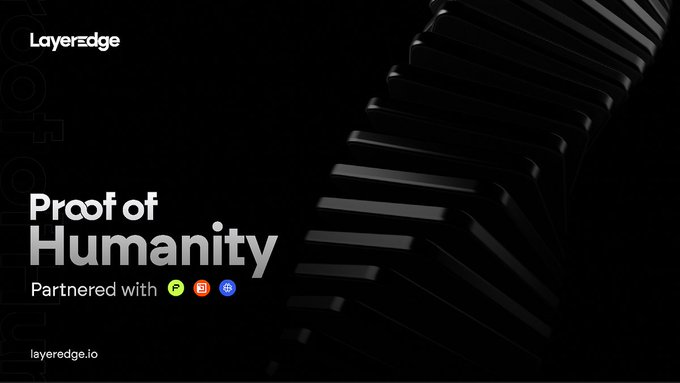
The Core Objective of LayerEdge Proof of Humanity (PoH)
In the crypto space, Sybil attacks remain a major threat to ecosystem fairness. Attackers create fake identities to exploit benefits such as airdrops or manipulate governance votes. LayerEdge’s Proof of Humanity (PoH) aims to solve this problem. It combines Web2 and Web3 verification methods (e.g., exchange KYC, social account binding) to ensure that each participant in the LayerEdge ecosystem is a real individual—without exposing private personal data.

How PoH Achieves Privacy Protection and Attack Resistance
At the heart of LayerEdge PoH lies Zero-Knowledge Proof (ZK Proof) technology and the zkPass node network. Users only need to submit verification materials via the Leia dashboard. The system automatically performs multi-level identity verification. For example, binding KYC info from centralized exchanges increases verification weight. However, all data is encrypted, and only the verification result is stored on-chain. This design complies with privacy regulations like the EU’s GDPR while resisting bots and fake accounts.
April 25, 2025, is the deadline for PoH verification. Users who miss it cannot participate in the initial airdrop but may join later phases early by staking points. This mechanism balances the rights of early and late participants while encouraging long-term ecosystem contributions.
PoH and the Token Economic Model
9% of LayerEdge’s $EDGE token supply will be allocated to users who complete PoH verification and will be fully unlocked during the TGE. This ensures airdrop rewards are tied to genuine users, avoiding token dumps by fake accounts. Additionally, verified users can run CLI nodes or complete testnet tasks to accumulate bonus points and further boost their airdrop weight.
Similar mechanisms are seen in other projects—for instance, Hamster Kombat uses gamified tasks to verify user authenticity, and Tapswap relies on social graph analysis. However, LayerEdge innovates by combining privacy protection with multi-chain compatibility (e.g., native Bitcoin settlement through BitVM), offering foundational infrastructure for cross-chain ecosystems.
Future Challenges and Ecosystem Outlook
Despite its technical strengths, PoH faces implementation challenges. Dependence on third-party nodes like zkPass introduces single-point-of-failure risks, and high-volume verification (e.g., 4 million requests on April 19, 2025) may cause network congestion. Additionally, if the mainnet fails to deliver on its promise of “90-99% Bitcoin settlement cost reduction,” ecosystem attractiveness could suffer.
In the long run, PoH’s success could lead more projects to adopt decentralized identity verification. For example, JuCoin‘s DID solution already supports cross-chain identity interoperability and may synergize with LayerEdge in the future.
Key Action Recommendations
-
Users should complete PoH verification by April 25, 2025, to maximize airdrop rewards.
-
Monitor the technical performance post-mainnet launch to assess its actual value as a “Bitcoin ZK aggregation layer.”
-
Extend token holding periods through staking and governance participation to reduce post-TGE market volatility.
With these measures, LayerEdge PoH could become a benchmark for balancing fairness, privacy, and scalability in the crypto ecosystem.





